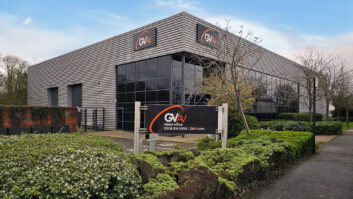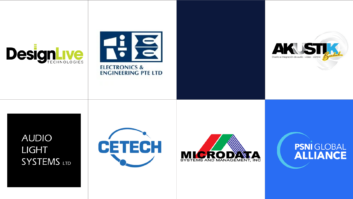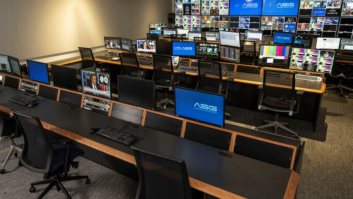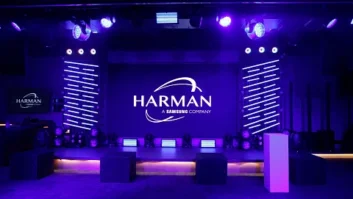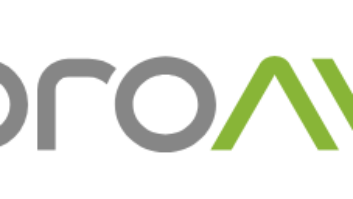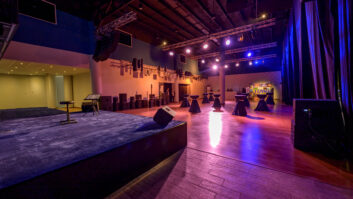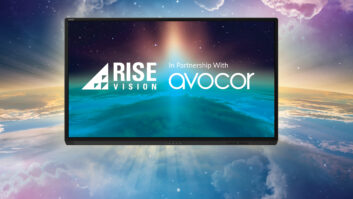
Dudley McLaughlin, regional sales manager at Renkus-Heinz, tells Installation why it is so important that manufacturers demystify the ‘cutting edge’ and help integrators win more business
Digital beam steering has become an established technology in the AV space. More than two decades of innovation and science has been poured into the technology. Today, it provides multiple integrations with the ability to position audio precisely where it is desired most: on the audience. It is a cutting-edge technology that has matured in a way that truly enables sensational sound, amazing experiences, and which wows audiences. But is it truly accessible?
The integration channel today is diverse when it comes to the projects that an individual installer might take on. It’s possible steerable audio has – for many – been pigeonholed as a technology that is available only to an upper echelon of projects: the largest theme parks, the most robust theaters, and the largest of churches.
It is up to manufacturers to challenge such a notion and state firmly that this technology belongs in more integrations. But to make that an honest statement requires manufacturers to find ways that make the technology increasingly accessible to all types of integrations. They must reduce the complexity of installation and operation, lower the barrier of entry in terms of cost, and democratise access to the solution.
What is steerable?
A brief primer: beam steering technology is a specific science that is incorporated into a loudspeaker solution. A loudspeaker that incorporates digitally steerable technology allows additional levels of tuning that digitally positions audio where you – the integrator – want it most.
With digitally steerable solutions, the answer to poor audio is no longer to just ‘turn up the volume’ but rather to reposition the sound. Move it away from reverberant surfaces. Keep it from bouncing off walls. Place it with precision. The result of a steerable solution is a more immersive experience. It can be a component of a larger AV installation that provides an encompassing moment. It can also be used to deliver audio in a precise way. The umbrella term for this would be ‘audio that impresses’ the listener.
Steerable audio allows for speakers to become invisible. By placing the speakers in a way that blends in with an environment, they become hidden to most. Custom design and colors allow for this to be taken to the next level.
There are many benefits to gain from this crafting of an experience. For some, it will be enough to have a message delivered in an expert way. For others, the listener will turn into a brand advocate – telling more people about the experience, and resulting in increased customers for the business.
Where does steerable belong?
The traditional markets are mentioned previously in this article – major theme parks, large houses of worship, entertainment venues – but the idea here is to go far beyond the traditional. Consider the following locations as areas where this level of experiential audio is likely to see growth in the coming months and years.
Retail: The days of malls and shopping courts are numbered without some reinvention. What keeps people coming in to a space today is more than just a product and price. Product and price exist online. What doesn’t exist online is that moment of awe, excitement, or wonder that AV can create. Retail needs a favorable experience to be successful. This might sound lofty or romanticised, but the truth is multiple retail locations are achieving this right now. They have found a way to surprise people the moment they walk in the door – and it always includes an immersive audio component.
Education: Intelligibility is one of the most requested components of audio systems in all levels of education. Studies have shown that intelligibility leads to higher test scores. An institution that understands that fact is typically quite swift in the decision to approach steerable solutions.
Corporate: Much as education desires intelligibility, the corporate market is interested in ways to improve meeting spaces. Whether a conference room or an auditorium, the ability to keep employees and stakeholders engaged is critical.
Government: A broad category once you consider the idea of combining intelligibility and experience. While court rooms and city council chambers can benefit from clear audio, airports and train terminals can also see positive outcomes by keeping people informed and relaxed.
Small to medium sized live performance: The ability of steerable solutions to bring concert-quality audio into a smaller space is a game changer for venues. If you can keep audio from bouncing around and direct it on the audience, you have the ability to transform a venue by establishing it as a top space.
How do we make steerable available to these markets?
While it makes sense to move into these spaces, how do we do that? The answer is in enabling support systems. Yes, manufacturers need to expand the product line to include smaller form factors. And some can even do custom builds to provide the exact size required in a venue. Those are obvious needs. But to go that next step we manufacturers need to look at more ways of supporting the loudspeaker.
Enabling technologies are an obvious step. By making software more intuitive we can shallow the learning curve. And by implementing simple setup through mobile applications we can truly demystify the setup.
Consider that for a moment: the ability to quickly set the software component of a digitally steerable solution. It immediately improves the efficiency of training staff – and allows for additional installers to take on such a project. No complicated algorithms, just a plug and play solution to optimal audio.
That naturally brings us to streamlined installation and configuration processes. We must find ways to reduce the amount of physical labour required to install these solutions. We must ensure that a single loudspeaker can do the same work of all the overhead ceiling speakers that would have been otherwise installed. By removing the cutting into the ceiling, the cable pulls, and the physical install time, we can again improve the ability for integrators to get steerable solutions into more locations – and in turn, be more profitable.
Finally, there must be a provision of support from the manufacturing community that looks at design, specification and troubleshooting throughout the life of the project. That includes the moment the integrator or the consultant begins the project and it goes through the moment a device may experience a problem. By offering everything from acoustic assistance and modeling to replacing parts, the manufacturer can give the integration channel a high level of confidence in bringing steerable solutions to more installations.
Partnerships are required
These solutions exist right now. They simply require a partnership between the AV channel and the manufacturers that create such offerings. By partnering, the channel and the manufacturer can craft solutions that allow for audio to be placed exactly where you want it.
The result, of course, is the immersive experience that transforms businesses. It means improved audio being delivered to more customers. And when that happens, the world simply sounds better.

